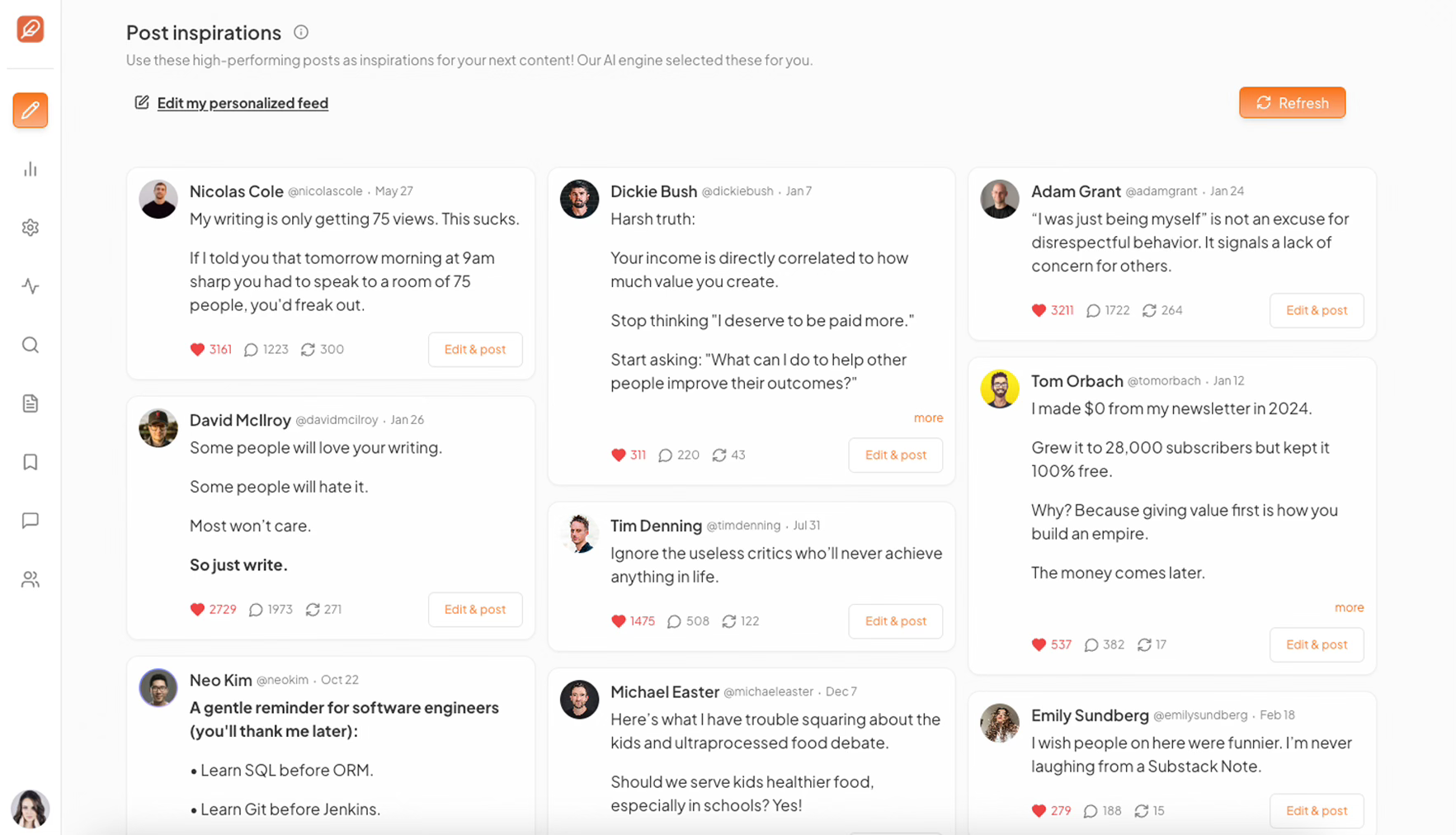One of the Best Substack Tools & Extensions 2025
Write, analyze, visualize, schedule
Brought to you by TL:DR — free daily newsletter with links and TLDRs of the most interesting stories in startups 🚀, tech 📱, and programming 💻!
My Medium friends can read this story over there as well.

Notes it’s where it’s at.
Substack is a writing and newsletter platform par excellence, no doubt, but it’s really been booming since the addition of social media, aka. Notes.
And this opens up a word of possibilities.
The tool I want to talk about today takes Substack Notes to a new level. I like it. But I will say right away, it’s not for everyone.
Because Substack is (still) different than most social media. Thank God.
The Tool
It’s called WriteStack*.
Substack wants us to post more notes. Notes is booming. It’s the reason many big-name creators have now joined Substack.
But should you write about?
WriteStack swoops in and says, “Don’t worry, I’ve got this.” It learns your existing posts and style, checks out what’s trending among other Substack writers, and starts generating short, snappy Notes in your voice.
Now, if you just take those, it’s pretty boring. But they’re a great start to create something even better.
There’s more, too: WriteStack doesn’t just help you draft Notes. It helps you actually organize and schedule them.
Want to make your phone unique
Turn your iPhone home screen into a stunning dark Vision OS* version.
The Kanban Board You Didn’t Know You Needed
Organizing your creative brain in a Kanban board feels like peak adulting.
And WriteStack does this out of the box. A Kanban board view of Notes.
It gives you a visual dashboard. You can move Notes around like digital sticky notes, keep track of what’s coming up.
Like Trello for Substack.
And yes, you can schedule your Notes in advance.
WriteStack lets you space out your publishing, batch your creative bursts, and even experiment with different times and styles. For the writers who love to experiment and analyze.
You don’t need it. But it’s cool.
Automation
Now you’re generating Notes, organizing them, and scheduling them. All inside WriteStack. Things are feeling suspiciously efficient.
The danger is that you forget to actually write yourself.
It’s easy to slide into auto-mode, letting the AI crank out 10 Notes per day while you scroll Notes from other writers and pretend you’re “researching trends.”
People will notice. And it’s boring as hell.
AI tools are only as good as the person using them. If WriteStack becomes your co-writer, that’s cool. If it becomes your whole writing identity, you won’t be special in any way.
Pick your poison.
Who Is This Actually For?
Let’s be honest: this isn’t for all the Substack writers. People came to Substack because it was not the typical social writing platform with AI garbage and the same re-used, recycled content.
For those writers, it’s not a good fit. And that’s perfectly fine!
WriteStack is for:
Creators trying to grow a Substack audience with a plan to optimize and analyze
People who want to post Notes more consistently but struggle with ideas
Writers who love seeing their workflow laid out in columns
Data-minded thinkers who want to see what’s working and double down
I know many of these kinds of writers. And I bet they’ll enjoy WriteStack* a lot.
My Take
Let WriteStack help you organize Notes, keep track of what’s happening, analyze what’s working, and dismiss what isn’t.
Don’t let it become your writing voice.
TL;DR
WriteStack* is part AI ghostwriter, part scheduling assistant, part Kanban board. It helps you:
✅ Generate Notes using current trends
✅ Organize and track your ideas visually
✅ Schedule posts in advance to stay consistent
✅ Save time
If you write on Substack and want to grow without going insane, try it. Just don’t let it replace you.
Brought to you by TL:DR — free daily newsletter with links and TLDRs of the most interesting stories in startups 🚀, tech 📱, and programming 💻!
*this is an affiliate or SparkLoop* partner link. I’ll get a commission if you decide to sign up.




Wow! I mean Wow! I just tried it! Wow! .... did I just say that? Wow! 😲
Nice, sounds like fun!